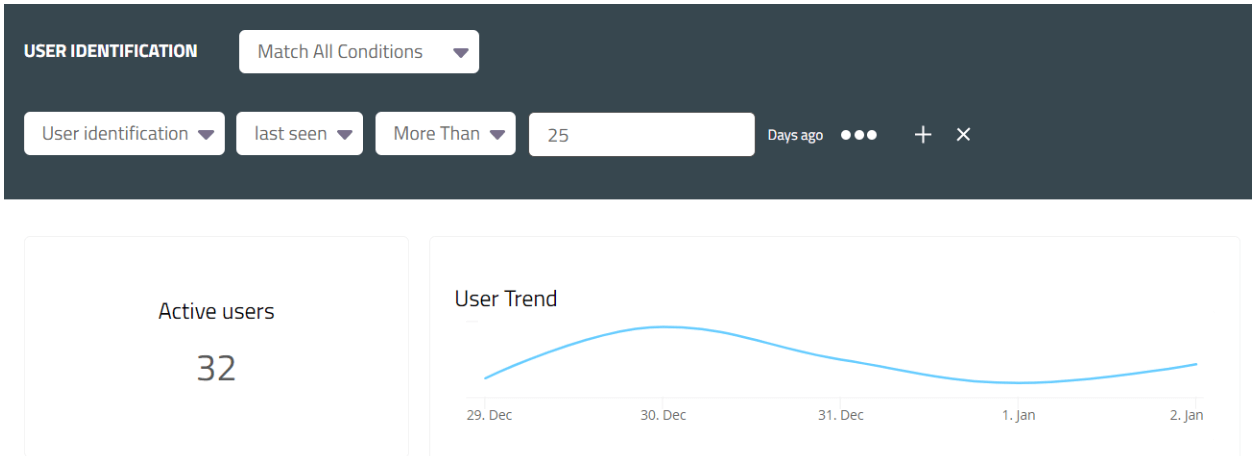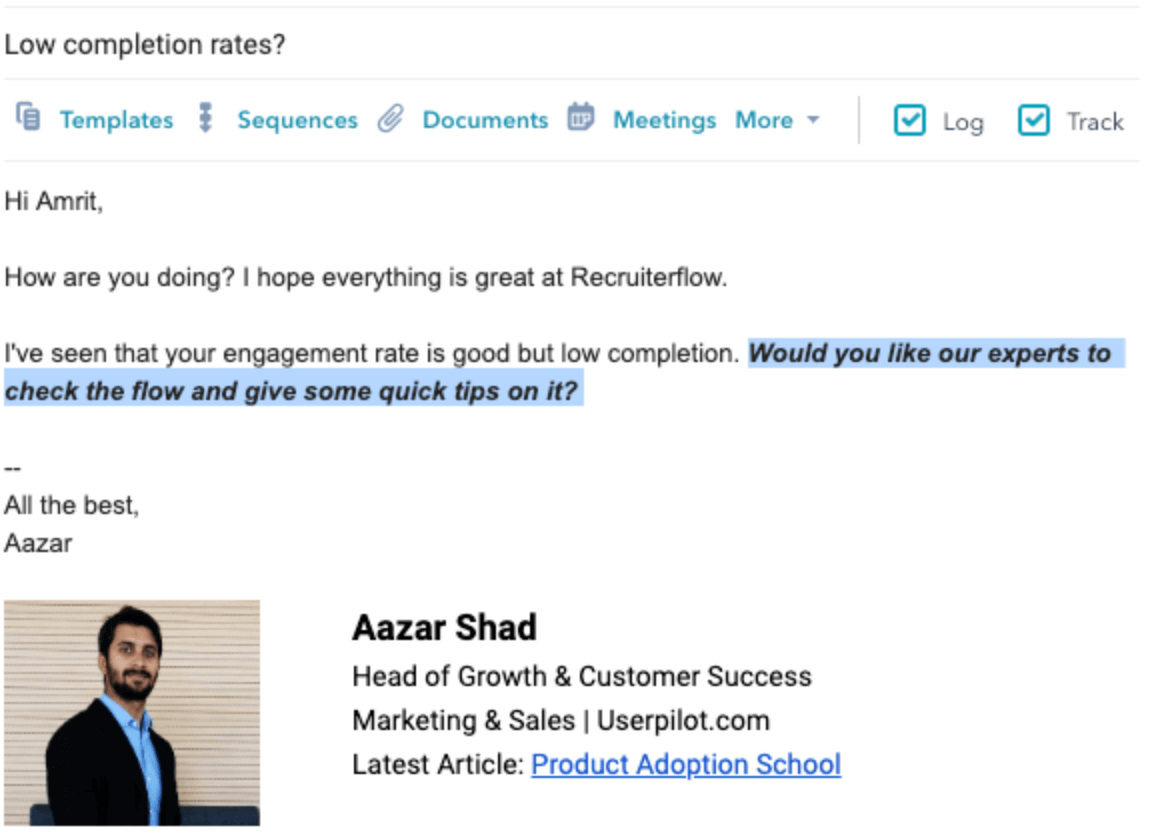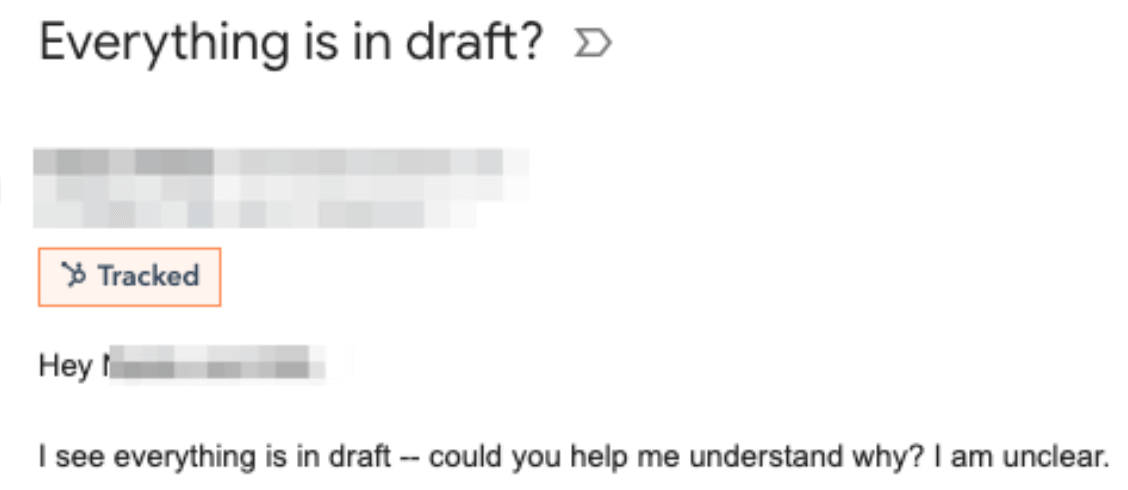It’s harder to acquire new customers than ever. According to Profitwell’s survey, customer acquisition cost (CAC) in the B2B industry has grown by more than 70% over the last five years. Therefore, knowing how to retain your customers and making sure that they’re getting the most value from your product is crucial.
In today’s market, B2B SaaS companies are expanding through product-led growth. But how do they retain their new customers and get them using their product consistently? The answer lies in product-led customer success.
What is product-led customer success and why is it important?
At its core, product-led customer success isn’t much different from the “traditional” customer success mindset everyone is accustomed to. But the biggest (and most important difference) lies in how we approach the customer and set them up for success with our product.
So, what’s this different approach that makes product-led customer success so special?
Unlike “classical” customer success, product-led customer success is based on the constant monitoring of your users’ in-app data, behaviors, and engagement, along with assessments of customer health. In other words, product-led customer success strategies are triggered by different in-app metrics.
Why does this matter? Because knowing in which stage the users feel stuck, where exactly they found obstacles, and how to help them will not only help you to boost your overall trial-to-paid conversion rates, but it will also improve your retention and overall customer success and growth.
Product (or let’s say in-app) data tells us exactly how the customers feel inside our product. Instead of guessing how can we help our customers, we know exactly what we need to do. That could be a quick demo call, sending some helpful resources, or something else. Since it’s the product that’s driving growth now, we need to start using product data to tailor the perfect customer experience. This is the most effective way to ensure a successful long-term relationship.
Now, if you want to learn how to “do” product-led customer success, keep reading! In this article, we’re going to show you our own experiences, data, strategies and secret tips we’re using to reduce churn, improve retention, make our customers happy, and boost our growth by over 30% month-over-month.
The three pillars of product-led customer success
In order to properly execute the product-led customer success model, you’ll need to set up some things first. Without them, it will be really hard for you to take the juicy fruits of product-led customer success.
Below are the three pillars of product-led customer success. You’ll need to have:
- Clearly defined user journey(s), user onboarding, and feature adoption flows
- Various user segments (both account-based and product-based)
- The ability to proactively reach out to and educate customers (both in-app and out of the app).
Now let’s break down each of these and show how we at Userpilot are using these pillars to drive product-led customer success.
Define user journey(s), user onboarding, and feature adoption flows
The thing with product-led customer success is that you won’t be able to proactively reach out and make your customers successful if you don’t have a proper user journey, user onboarding, and feature adoption flows. Without these, you won’t be able to trigger different user behaviors and measure their overall satisfaction.
Remember that one of the main differentiators of product-led customer success is scalability. Without the user journey, how will you be able to know where exactly your customer feels stuck? And how can you apply this knowledge across the product?
The overall user journey(s), user onboarding, and feature adoption flows may differ from product to product, but some general rules apply to everyone. Two moments in your user journey(s) or user onboarding are particularly important:
- The “aha” moment: when your user perceives the value of your product/feature (when he realizes what the product can do for him)
- User activation point: when your user actually feels the value of your product/feature (in other words, when he tries it and experiences the benefit).
For the user to be activated and considered “adopted,” he needs to go through several “aha” moments and user activation points for every core feature. User onboarding and feature adoption flows are based on different behaviors and triggered by in-app experiences.
In other words, forget about the product tours. They’re frustrating your users and obstructing their entire user experience. In-app experiences that are triggered by the users’ context or actions (such as trying to use some new feature) are the new way of onboarding users and adapting them to your features.
Now let’s move on to the second pillar of product-led customer success: user segmentation.
Segmenting your users for product-led customer success
You can’t know how to help someone if he isn’t segmented at least by some factors, right? There are two different user segmentation methodologies that work with product-led customer success (at Userpilot, we’re using the both of them):
- In-app user segmentation: segmenting your users by different in-app events, such as the time when they were last seen, the number of features they activated, and so on.
- Account-based user segmentation: segmenting your users based on account data (company size, premium clients, lifetime free, etc.)
Since you created a nice, helpful, and triggered user onboarding flow, different in-app events, user context, and user behaviors will tell you how to help them (if they need help at all).
For example, at Userpilot, we use the following triggers:
- How many designs for user experiences are “live?” How many are still saved as drafts?
- How many events has a customer set up?
- How many segments of the user experience have they created?
- Has a user deactivated their copy of the script?
- Has a user deactivated all of the user experiences on their account?
- Has the user invited a team member on board or not?
- When did the user last chat or engage with the script?
Of course, these may differ from product to product, but there are some we use for every type of product, such as the “last time seen” trigger.

We use our own tool (Userpilot) to build user onboarding experiences and identify users by different parameters. In the image above, you can see that we have 32 users who haven’t used our product in over five days. This is a clear sign for us that we need to do something to help this specific user segment.
Product-led success requires proactive outreach
One of the main purposes of product-led customer success is reaching out to your customers exactly when they need it.
This requires proactive, fast, and educational outreach. Fortunately, thanks to your user onboarding triggers, user journey(s), user segments, and user identification, this won’t be too hard. Especially because you’ll know exactly how to reach out to and help them.
Let’s take a look at our own use case for product-led customer success.
Our first-hand approach to product-led customer success
Here are a few examples of how we at Userpilot are using the principles of product-led customer success in different situations.
When our users don’t see the value of our product
It’s totally natural to have some users who don’t see the value of your product, or who still don’t know how to make the most out of it despite going through all user onboarding sequences. In our case, these users don’t have high completion rates of their own user onboarding flows (the user onboarding sequences they built with Userpilot).
Once we identify those users, we send them an email like this:

When our users don’t take advantage of the full benefits of our product
Often, users stick to certain features within your product and use them all the time. They might not even try to use other things they have access to.
When we identify this type of user, we send them the following email:

This won’t just help our users learn more about our product and discover they can’t live without it. It’ll also help them take full advantage of the product and become more successful when using it.
When customers are “unhealthy”
Customer health refers to overall customer engagement and satisfaction and is a very important part of product-led customer success.
Customer health can be measured in various ways. You can use different types of surveys, such as the customer satisfaction score (CSAT) or customer effort score (CES). We, however, are using our own net promoter score (NPS) survey. It tells us exactly how our customers are feeling about our product.
There will always be customers that are happy with your product, neutral, or unhappy (read angry). Users that are very happy with our product have unlocked the full potential of Userpilot’s features. We do our best to cultivate a good relationship with these users since they have the potential to become ambassadors for our brand.
To determine overall user health, our customer tracking system looks at health (NPS score) and engagement metrics. These are things like:
- How often are they using the product
- When the customer was last seen or,
- Have they been using chat and what was their response rate
If it detects a customer with a high risk of leaving the platform, we will send them the following email:

If a customer starts deactivating experiences at an alarming rate or uninstalls the script, our product-led customer success team will receive a Slack alert. They can then reach out to the customer and try to bring them back on board. On the other hand, if a customer shows high engagement, the customer success team will send them an email with suggestions on how to improve their experience even further.
If someone gives us a high NPS score, we send them this type of email and ask for a Capterra review. Positive reviews from our happy customers will help us get more hot leads.

Key Takeaways
In a nutshell, product-led customer success is a scalable way of constant customer education. Its mission is to make your customers happy and successful. Product-led customer success is based on three main pillars:
- Carefully planned user journey(s), user onboarding, and feature adoption flows
- User segmentation and user identification
- Proactive outreach
Now that you know all of this, you’re free to implement the exact strategies we’re using to make our customers happy and successful with Userpilot. We’re sure they’ll help you on your road to success as well.

